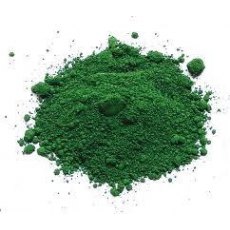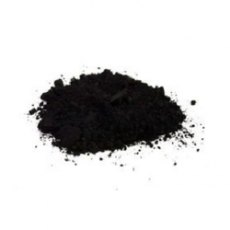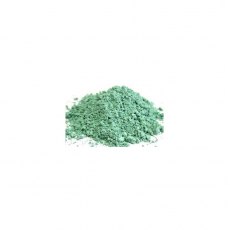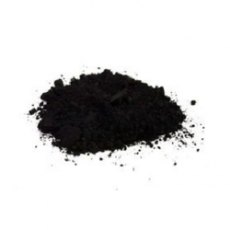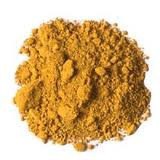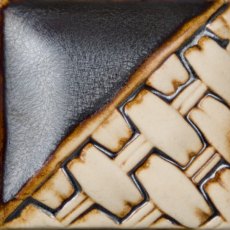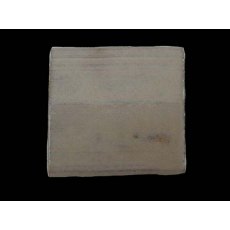Oxides & Opacifiers
Antimony Oxide
An oxide with various properties depending on its combination with other oxides .It is a semi metal ,having properties belonging to non-metal and metal oxides It is a glass former. It is also a modifier and opacifier. It modifies lead oxide to produce a yellow colour.
from £5.02 inc VAT
Chromium Oxide
Versatile pigment producing red, khaki or yellow in the presence of zinc. Incorporation with tin produces pink (chrome tin pink).Normally additions of 1-3% is used. A 1% addition to low firing leaded glazes with a soda content gives a brilliant yellow.
from £2.99 inc VAT
CMC Finnfix (Organic Polymer)
Added to glazes, as thickning agent, for application by brushing, generally incorporate up to 5% of binder.
Mix with a glaze stirrer attachment or hand blender untill glaze is smooth, this usually takes up to 40 minutes with an electric mixer.
Also useful in 0.5 - 2% addition to avoid colour transfer or for majolica painting.
Carboxymethyl cellulose
from £2.35 inc VAT
Cobalt Carbonate

1 - 3% to obtain a blue glaze.
Ethical Statement:
We only use suppliers when we are satisfied that our ethical values have been met. Please see attached information from our supplier relating to their ethical practices in the DRC.

from £17.13 inc VAT
Cobalt Oxide

The most powerful colouring oxide. This produces a deep blue or blue- black colour in lead and leadless glazes and a vivid blue in alkaline glazes. It gives good colour variations when used in combination with other oxides. 1 - 1.5% for a deep blue.
Ethical Statement:
We only use suppliers when we are satisfied that our ethical values have been met. Please see attached information from our supplier...

from £17.68 inc VAT
Copper Carbonate

Weaker than copper oxide, but gives an evenly textured glaze less prone to speckling.
3 - 7 % addition.

from £4.68 inc VAT
Copper Oxide

Transparent apple green under neutral or oxidizing conditions except in alkaline glazes when a turquoise blue is produced deepening to transparent persisian blue in strongly alkaline ones. In reduction a copper red colour is produced known as sang de beuf.
NOTE - when added to low solubility glaze , copper causes the solubility of the glaze to be greatly increased ,making it unsuitable for use on...

from £4.20 inc VAT
Gum Arabic
To use as a Glaze thickner or binder add between and 0.25- 1%
It may also be used as a plasticiser.
2.5 % of the dry weight of the clay) for increasing the dry strength of bodies.
Gum arabicis used as an additive to glazes or underglazes to give a harder surface when dry. This avoids rubbing and smudging before firing. Mix with hot water. Gum arabic is used as an additive to glazes or underglazes...
from £3.83 inc VAT
Ilmenite
Ilmenite is used to give a granular or spotty effect ,or else gives texture to a glaze. The ore contains titanium and iron oxide.
Analysis
FeO2 TiO2
from £2.13 inc VAT
Iron Oxide Red

Synthetic ferrous oxide. 2 - 10% produces even shades ranging from ambers to brown.

from £2.13 inc VAT
Iron Oxide Yellow Ochre
Ferric Oxide.3 - 8% produces browns and honey yellows in glazes depending on amount.
from £2.39 inc VAT
Lithium Carbonate

A good alkaline flux used as a substitute for soda and potash when a good craze resistance is required. Provides typical alkaline colour response.
Analysis
Li2CO3

from £10.01 inc VAT
Magnesium Carbonate

Used as a high temperature flux in stoneware glazes (up to 10%) producing a semi matt surface. Larger quantities give an opaque dry appearance BUT may cause crawling and pin holing- CAUTION

from £2.28 inc VAT
Manganese Carbonate
Generally produces colours obtained from manganese dioxide but is weaker and more finely divided.
from £2.65 inc VAT
Manganese Dioxide

0.2 -5% gives pink to brown in lead and leadless glazes .Gives a rich blue plum in alkaline tin ones, it can also give a rich violet when combined with small amounts of cobalt.

from £2.13 inc VAT
Mayco Cobalt Wash Brush On
When applied for full coverage, Cobalt Wash fires to a rich cobalt blue with a glossy finish. It can be used for stenciling, stamping, and silkscreening if it is layered with a stable transparent glaze. Sometimes even if a glaze is stable, there can be some blurring of the lines when the glaze is applied thick and it is fired in a vertical orientation. When used in combination, Cobalt Wash will add...
£4.15 inc VAT
Mayco Copper Wash Brush On
Copper Wash fires to a warm metallic finish that breaks green over texture. When used in combination, Copper Wash will add some green variation and movement to the glaze(s). The amount of mobility produced when using Copper Wash in combination is dependent upon how much of each product was applied; how many coats of each; and the performance of the glaze it is being paired with. For example, layering...
£4.78 inc VAT
Mayco Iron Wash Brush On
Iron Wash fires to an opaque deep rust red with a smooth matte finish. It works great for stenciling, stamping and silkscreening as it is a very stable product. When using in combination, apply a transparent and stable glaze such as a celadon or clear glaze to ensure stability in performance and maintaining details. Can be layered with other glazes to promote interactions and does not add much movement...
£4.78 inc VAT
Mayco Manganese Wash Brush On
Manganese Wash fires to a warm metallic finish that breaks brown over texture. When used in combination, Manganese Wash will add some brown variation and movement to the glaze(s). The amount of mobility produced when using Manganese Wash in combination is dependent upon how much of each product was applied; how many coats of each and how many different products are being used; and the performance of...
£4.15 inc VAT
Mayco Rutile Wash Brush On
Rutile Wash fires to an opaque pale burnt orange with a smooth matte finish. It works great for stenciling, stamping and silkscreening as it is a very stable product. When using in combination, apply a transparent and stable glaze such as a celadon or clear glaze to ensure stability in performance and maintaining details. Can be layered with other glazes to promote interactions and does not add much...
£4.15 inc VAT
Nickel Oxide
Will produce greens, brown and grey glazes. It works best in combination with other oxides to give a subtle grey hue to other colours, such as cobalt or iron oxide.
from £11.76 inc VAT
Rutile
Rutile is used as an ore containing titanium and iron oxide. It gives a weak buff brown tint and is more commonly used to give dramatic texture to a glaze of broken or mottled colour, although it does not give this effect in lead glazes. Excellent for modifying other stains or oxides . Rutile is also widely used in crystalline glazes.
from £2.13 inc VAT
Silicon Carbide Coarse 150s
Silicon Carbide powder has some curious uses in ceramic glazes and can be used to make crater and foam glazes.
from £3.50 inc VAT
Silicon Carbide Fine 240S
A 5% addition gives a localised reduction effect in an electric kiln. The effect requires a leadless Tin based glaze and aids colour development. Large quantities will cause severe blistering. Silicon Carbide powder has some curious uses in ceramic glazes and can be used to make crater and foam glazes.
from £3.50 inc VAT
Tin Oxide

The most reliable, oldest, and most widely used opacifier. Produces a softer white and less refractory (neutral) than zircon. 4 - 5% produces semi -opaque glazes 8 - 10% gives a fully opaque glaze.

from £9.14 inc VAT
Titanium Dioxide
Used as a glaze opacifier. Additions of up to 10% produce a creamy white glaze with a matt or semi matt surface. Slow cooling assists crystallization.
from £2.92 inc VAT
Vanadium Pentoxide
Up to 10% addition gives a weak yellow as a stain. Can be used at a higher temperature than antimony oxide, gives an opaque yellow when used in combination with tin oxide.
from £13.44 inc VAT
Zinc Oxide
The source of zinc, and in small amounts, is useful as a flux in middle and high temperature glazes imparting a wider firing range and good craze resistance . Above 10% tends to produce a frost-like matt surface with some opacity and can cause occasional pinholing . Also makes glazes susceptible to crawling - CAUTION
from £2.89 inc VAT
Zirconium Silicate

An ultra fine form of Zircon used as an opacifier. Add 5 - 8% for semi opaque and 10 - 15% for fully opaque glazes.

from £2.13 inc VAT



